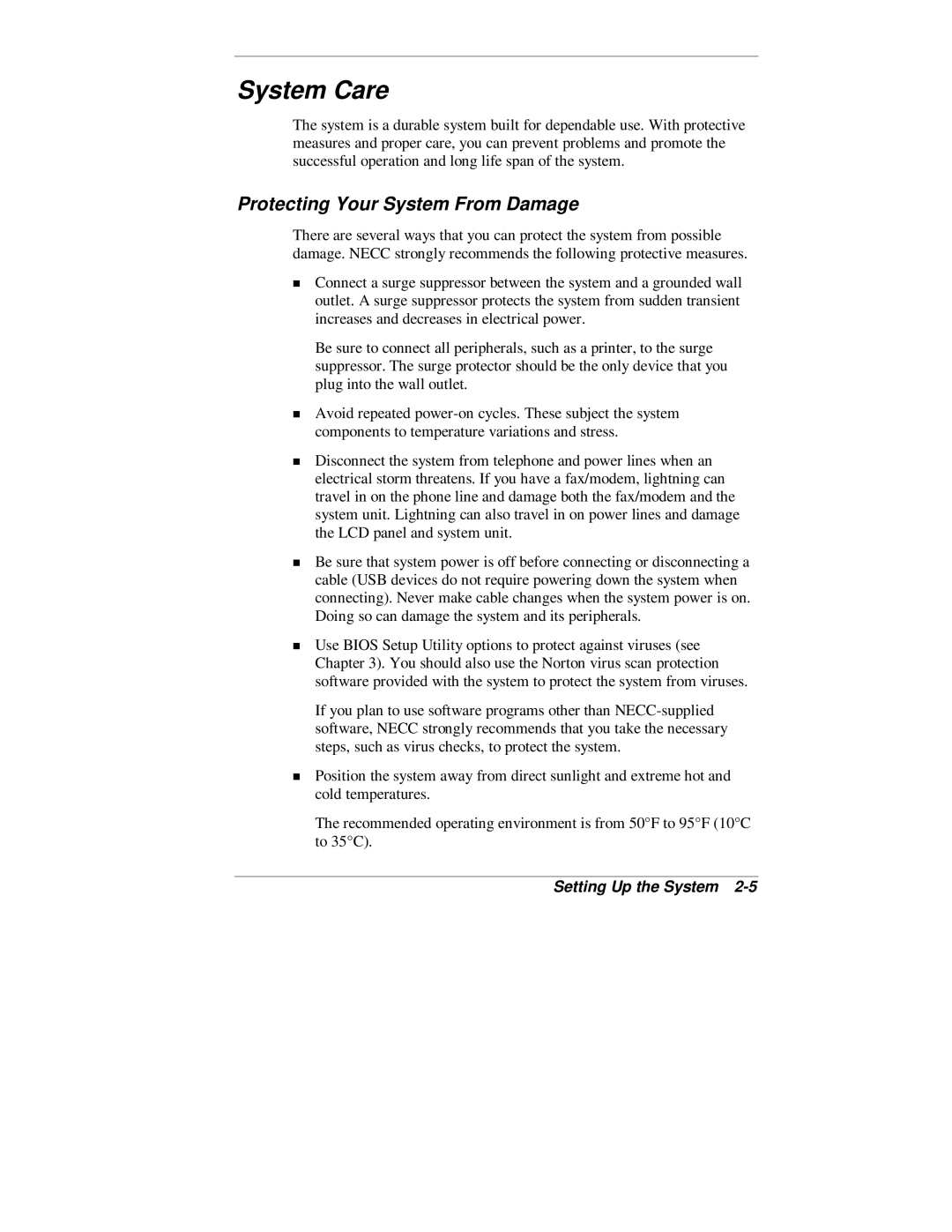
System Care
he system is a durable system built for dependable use. With protective measures and proper care, you can prevent problems and promote the successful operation and long life span of the system.
Protecting Your System From Damage
here are several ways that you can protect the system from possible Tdamage. NECC strongly recommends the following protective measures.
Connect a surge suppressor between the system and a grounded wall outlet. A surge suppressor protects the system from sudden transient increases and decreases in electrical power.
Be sure to connect all peripherals, such as a printer, to the surge suppressor. The surge protector should be the only device that you plug into the wall outlet.
Avoid repeated
Disconnect the system from telephone and power lines when an electrical storm threatens. If you have a fax/modem, lightning can travel in on the phone line and damage both the fax/modem and the system unit. Lightning can also travel in on power lines and damage the LCD panel and system unit.
Be sure that system power is off before connecting or disconnecting a cable (USB devices do not require powering down the system when connecting). Never make cable changes when the system power is on.
TDoing so can damage the system and its peripherals.
Use BIOS Setup Utility options to protect against viruses (see Chapter 3). You should also use the Norton virus scan protection software provided with the system to protect the system from viruses.
If you plan to use software programs other than
Tsteps, such as virus checks, to protect the system.
Position the system away from direct sunlight and extreme hot and cold temperatures.
The recommended operating environment is from 50°F to 95°F (10°C to 35°C).
